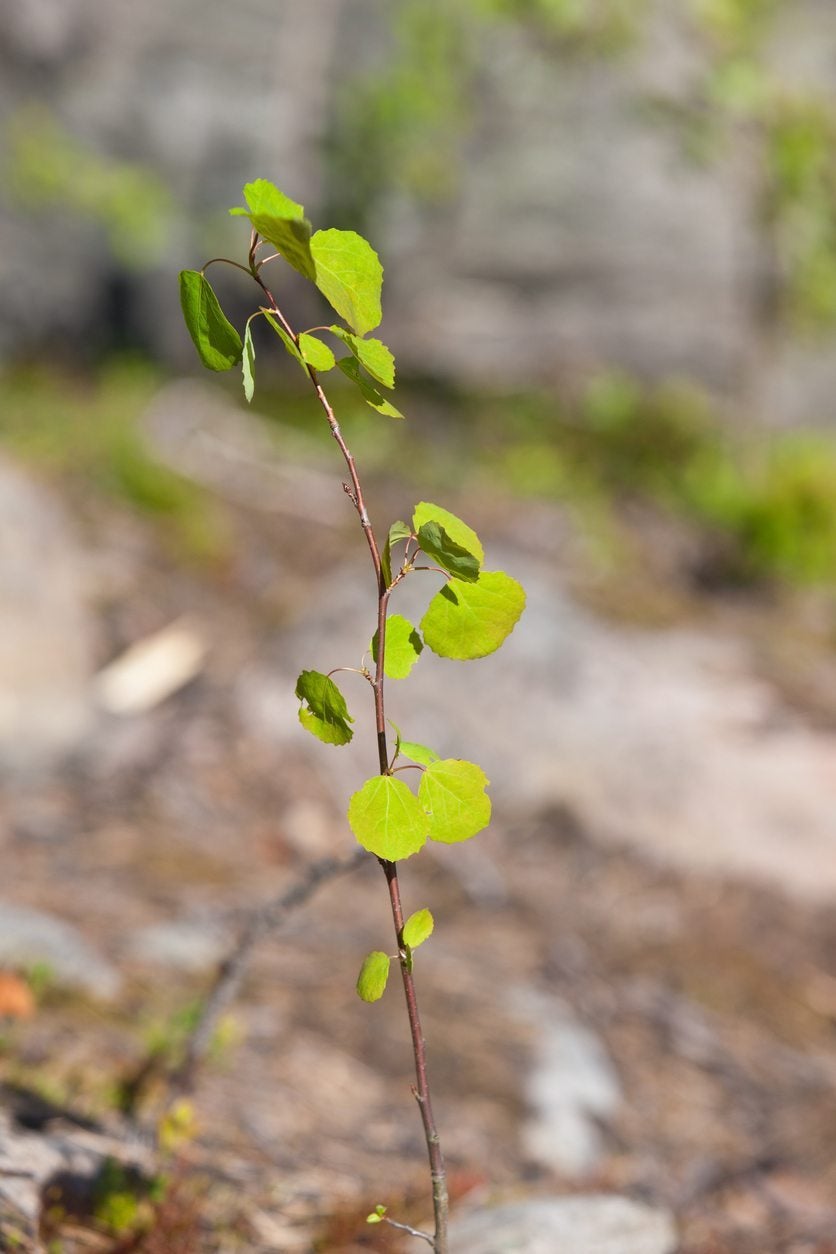Aspen Tree Information: Learn About Aspen Trees In Landscapes


Aspen trees are a popular addition to landscapes in Canada and the northern parts of the United States. The trees are beautiful with white bark and leaves that turn a striking shade of yellow in the autumn, but they can be finicky in a few different ways. Keep reading to learn more aspen tree information, including how to care for aspen trees in landscapes.
Aspen Tree Information
One problem that many people come up against when growing aspen trees is their short lifespan. It’s true – aspen trees in landscapes usually only live between 5 and 15 years. This is usually due to pests and diseases, which can be a real problem and sometimes have no treatment. If you notice your aspen becoming sick or infested, usually the best thing to do is to cut the offending tree down. Don’t worry, you won’t be killing the tree. Aspens have large underground root systems that continually put-up new suckers that will grow into large trunks if they have the space and the sunlight. In fact, if you see several aspens growing near each other, odds are good that they’re actually all parts of the same organism. These root systems are a fascinating element of the aspen tree. They allow the trees to survive forest fires and other aboveground problems. One aspen tree colony in Utah is thought to be over 80,000 years old. When you’re growing aspen trees in landscapes, however, you probably don’t want a colony that puts up new suckers all the time. The best way to prevent this spread is to surround your tree with a round metal sheet sunk 2 feet (61 cm.) into the ground a few feet (1 m.) from the trunk. If your tree does fall to disease or pests, try cutting it down-- you should see new suckers very soon.
Common Aspen Tree Varieties
Some of the more common aspen trees in landscapes include the following:
- Quaking aspen (Populus tremuloides)
- Korean aspen (Populus davidiana)
- Common/European aspen (Populus tremula)
- Japanese aspen (Populus sieboldii)
Gardening tips, videos, info and more delivered right to your inbox!
Sign up for the Gardening Know How newsletter today and receive a free copy of our e-book "How to Grow Delicious Tomatoes".

The only child of a horticulturist and an English teacher, Liz Baessler was destined to become a gardening editor. She has been with Gardening Know how since 2015, and a Senior Editor since 2020. She holds a BA in English from Brandeis University and an MA in English from the University of Geneva, Switzerland. After years of gardening in containers and community garden plots, she finally has a backyard of her own, which she is systematically filling with vegetables and flowers.
-
 Try The Trend – Turn Any Bed Into A Keyhole Garden With This Clever In-Ground Composter
Try The Trend – Turn Any Bed Into A Keyhole Garden With This Clever In-Ground ComposterKeyhole gardening is an efficient and sustainable practice that saves space. Get started on this DIY project quickly and easily with an in-ground composter.
By Bonnie L. Grant
-
 4 Superfast Composting Methods: Turn Waste Into Garden Gold In 30 Days Or Less
4 Superfast Composting Methods: Turn Waste Into Garden Gold In 30 Days Or LessTry the fastest composting methods to turbocharge your pile and transform kitchen scraps and garden waste into finished compost in just a few weeks.
By Mary Ellen Ellis
-
 Aspen Seedling Transplant Info – When To Plant Aspen Seedlings
Aspen Seedling Transplant Info – When To Plant Aspen SeedlingsPlanting a young aspen is inexpensive and easy if you transplant root suckers to propagate the trees, but you can also buy young aspen grown from seed. Click this article for information about when to plant aspen saplings and how to plant aspen saplings.
By Teo Spengler
-
 Growing Aspen Seeds – How And When To Plant Aspen Seeds
Growing Aspen Seeds – How And When To Plant Aspen SeedsAspen seed propagation is also possible if you know how to grow aspens from seeds and you are willing to work at it. For information on getting seeds from aspen trees and when to plant aspen seeds, this article will help.
By Teo Spengler
-
 Aspen Tree Care: Tips For Planting A Quaking Aspen Tree
Aspen Tree Care: Tips For Planting A Quaking Aspen TreeBeautiful quaking aspen trees are a sight to behold when even the slightest breeze makes their leaves appear to tremble. Learn about them before planting them in your yard.
By Teo Spengler